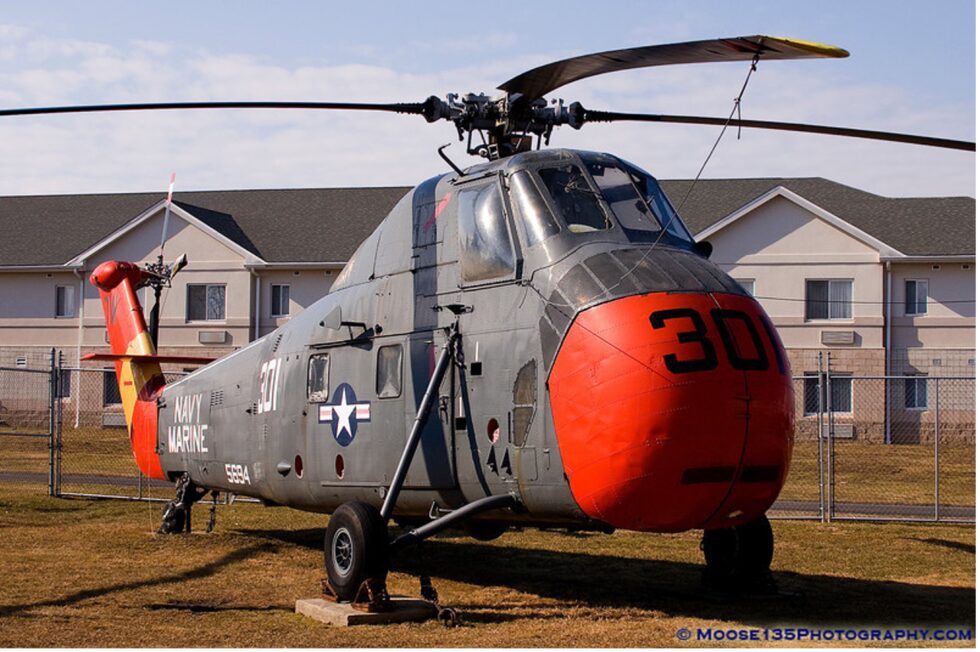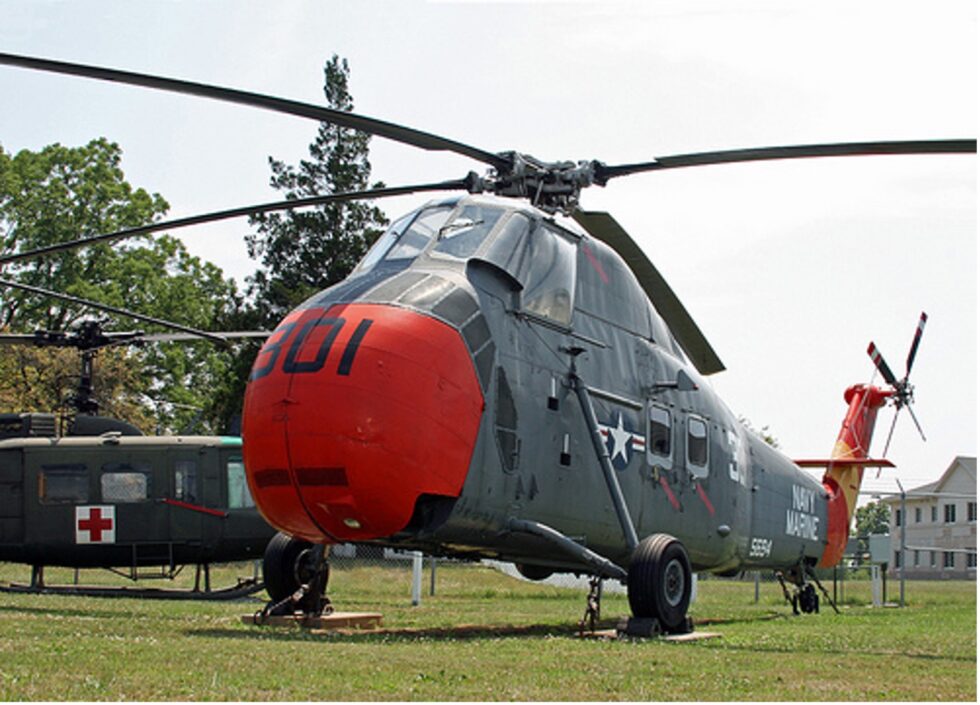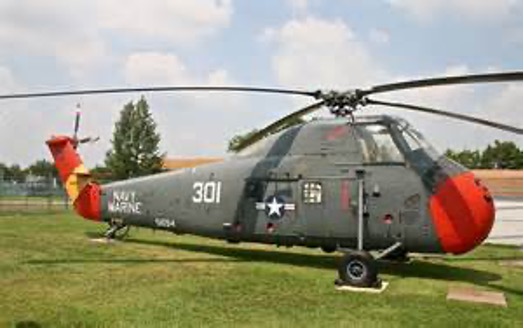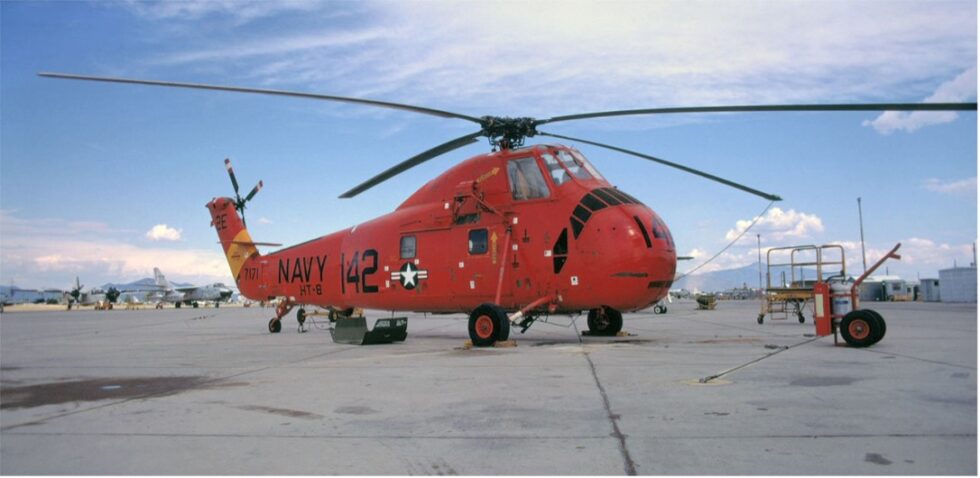USN NASWF Sikorski HSS-1/SH-34 Seabat
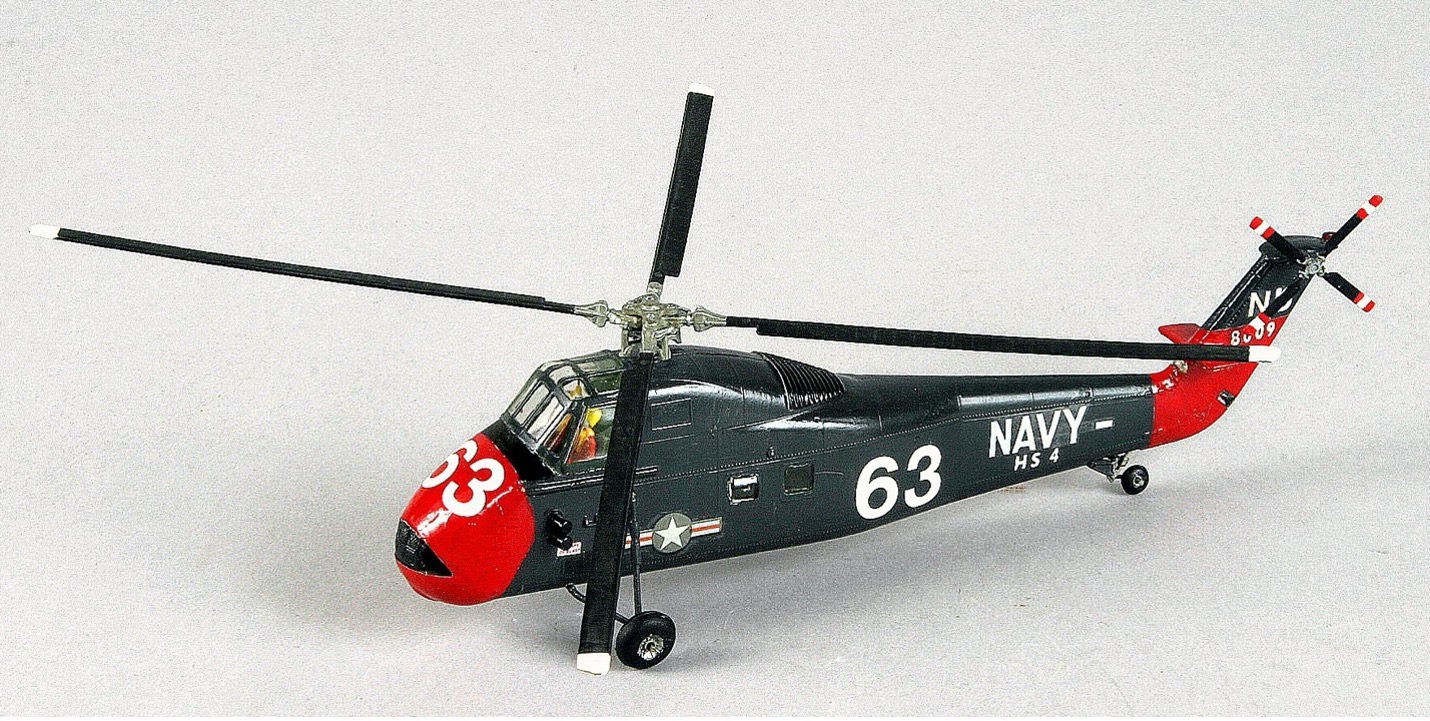
MODEL BY:
H. Davidson
Model Scale:
1/72
MODEL ADDED:
N/A
historical significance
First Albuquerque Visit: 1958
Additional Information:
The Sikorsky H-34 “Choctaw” (company designation S-58) is an American piston-engine military helicopter originally designed by Sikorsky as an anti-submarine warfare (ASW) aircraft for the United States Navy. The Sikorsky S-58 was developed as a longer and more powerful version of the Sikorsky Model S-55, or UH-19 Chickasaw, with a similar nose, but with a tail-dragger rear fuselage and landing gear. The aircraft first flew on 8 March 1954 and the first production aircraft was ready in September of 1956 and entered service for the United States Navy as the HSS-1 Seabat (in its anti-submarine configuration) and HUS-1 Seahorse (in its utility transport configuration).
In 1962, under the new unified DoD aircraft designation system, the Seabat was re-designated SH-34, the Seahorse as the UH-34, and the U.S. Army Choctaw as the CH-34. A total of 2,108 H-34s were manufactured between 1953 and 1970.
Albuquerque’s Kirtland Field was designated Kirtland Air Force Base in 1947, and the Armed Forces Special Weapons Project (AFSWP) operated on Sandia Base. When the United States Air Force established the Air Force Special Weapons Command at Kirtland Air Force Base in 1949, the United States Navy formed a detachment to investigate nuclear capabilities for naval aircraft and assist the AFSWP with naval equipment for demonstrations and training. The Naval Weapons Evaluation Facility (NWEF) operated through the Cold War investigating aircraft-weapon interfaces to provide United States Navy aircraft with nuclear weapons delivery capability.
In 1952 this detachment was designated the Naval Air Special Weapons Facility (NASWF) to conduct special weapons tests on the White Sands Missile Range and Tonopah Test Range in coordination with the United States Atomic Energy Commission. In March of 1961, the NASWF was re-designated the Naval Weapons Evaluation Facility (NWEF) and its mission was expanded to include safety studies on nuclear weapons. The aircraft used for NWEF testing were decorated with the NWEF thunderbird symbol and the NWEF detachment became known as the Rio Grande Navy by its sailors and civilians.
In 1992, with the consolidation of many naval activities and the drawdown of the U.S. defense budget, NWEF became part of the large, multisite Naval Air Warfare Center Weapons Division in China Lake. In 1993 the NWEF was decommissioned and became the first nuclear-weapons-related facility in the Free World to be shut down. As NWEF closed, it transferred some of its remaining people and functions to the China Lake site.
The Sikorski HSS-1 Seabat was assigned to the Naval Air Special Weapons Facility (NASWF) at Kirtland Air Force Base in Albuquerque, New Mexico in 1958 for special weapons separation and safety operations.
GALLERY:
SEARCH OUR DATABASE:

